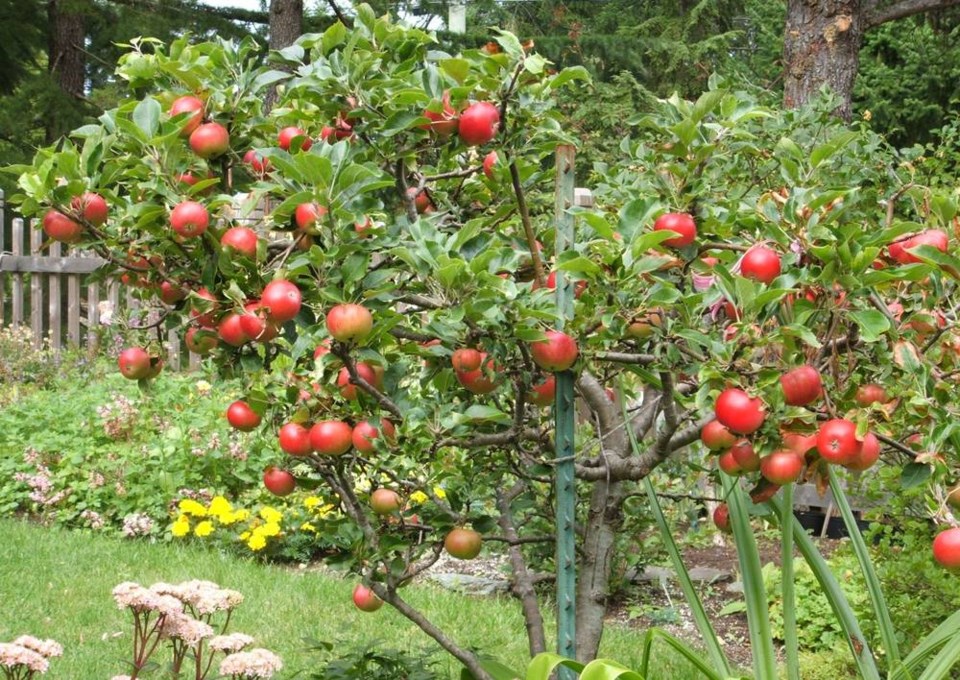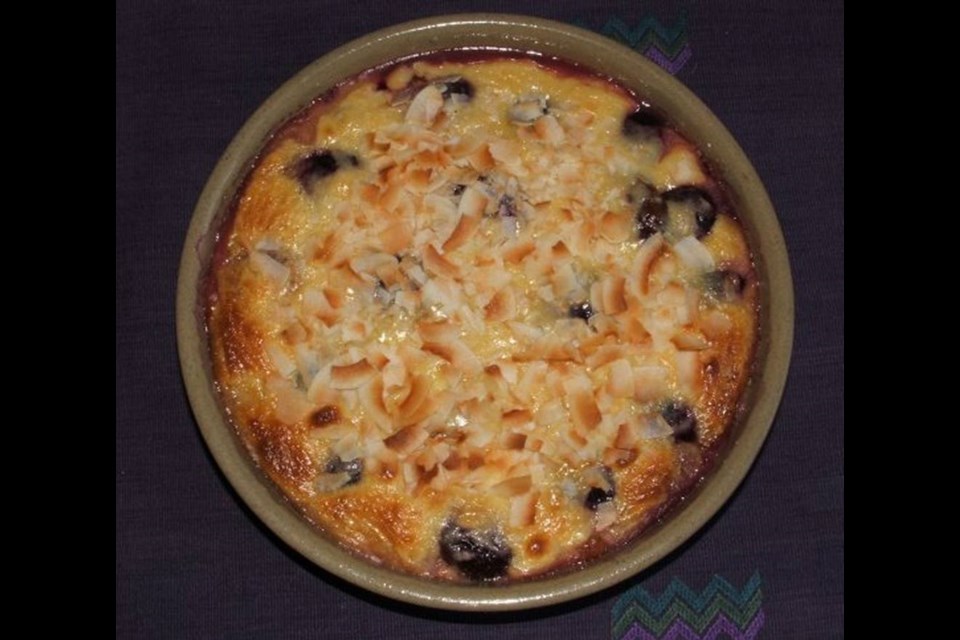Dear Helen: I am using frozen fruit from the garden in desserts these days and am recalling a recipe you once gave using a mascarpone topping over fruit in a baked dessert. Am I right? Do you still have the recipe?
M.H.
I too am enjoying frozen apple, blueberries and prune plums from the garden in desserts, and I still use the mascarpone topping once in a while as a special treat.
The recipe is my (ever-changing) rendition of one for an Italian style fruit cobbler that I found in a novel set in Italy. My latest version is to use the ingredients as a pie filling, simply because I prefer pies to cobblers and crumbles.
I like using two fruits together, with small chunks of candied ginger and/or almond paste between the fruit layers. Prune plum and apple is a nice combination, as is apple and blueberry.
For the pie, I bake the shell for 12 minutes at 350 F and then add the fruit. For the topping, cream 4 Tbsp butter with 4 Tbsp sugar. Beat in one egg and a 275-gram container of mascarpone. Stir in 2 Tbsp flour. Add (optional) vanilla and almond extract.
Spoon and spread over the fruit. Bake at 350 F for around 30 minutes, or until the topping is golden brown and the fruit bubbly.
For the cobber, put the fruit in a buttered baking dish and proceed as for the pie.
Dear Helen: I was planning to pick up a few potatoes at my local supermarket and plant them, until a friend told me that might not work well. Why wouldn’t it?
H.P.
Some supermarket potatoes may have been treated with a sprout-suppressing chemical, rendering them unpromising as seed potatoes. There is also the risk of importing diseases into the garden with the potatoes.
To avoid problems, purchase government certified disease-free “seed” potatoes each year. You’ll find them at your local garden centres and farm supply stores.
The potato varieties on display vary among outlets, but in stores that offer an extensive selection you’ll find many interesting potatoes.
Decide whether you want early (fast to produce usable tubers) potatoes for summer use, late potatoes, which store well, or mid-season potatoes. What colour flesh — white, yellow, purple? Do you prefer standard oval or round tubers or the elongated “fingerling” or Banana types of potato?
Put your chosen seed potatoes in a shallow box lined with newspaper and place the box in a bright location. Plant when tiny sprouts appear. Small seed potatoes can be planted whole. Cut larger ones into pieces, each piece with one or more sprouting “eye(s).”
Potatoes grow and produce best in a sunny site with a fertile, humus-rich soil.

Dear Helen: Since we moved into our current home, the apple trees have presented a puzzle. I don’t think we’ve picked the apples at the right time. Are there ways of knowing the best time to harvest apples?
M.M.
There are several indicators. First, from the latter part of summer onward watch for the first apples to fall. That is the first sign of a harvest time being close at hand. Then begin checking through the apples for the ones that detach easily.
Do this by lifting an apple in your hand and giving it a gentle twist. An apple at the ideal harvesting stage will detach without effort on your part. Never tug or pull at an apple, lest you damage its fruiting spur.
The apples will not all ripen at once. The trees will typically need checking through a number of times. To monitor how you are doing at assessing the apples, cut the occasional one open. Ripe apples have black seeds.
Apples vary widely in their harvest times. The earliest apples can start ripening around mid-August, while the very latest storage apples may not ripen until November.
Dear Helen: I’d like to find seeds of a delightful columbine I once had in my garden. Instead of hanging downward, the flowers faced upward, toward the sky. I can’t find a columbine that fits this description. Do you know the name?
S.W.
Your description is interesting and apt, because the columbine is most likely Aquilegia caerulea, the descriptive term from the Latin for “sky.” Cerulean refers to a deep blue colour.
You’ll find various seed sources online. McKenzie Seeds lists a hybrid form called Blue Star. Sheffield’s Seed Co. in New York lists the species.



